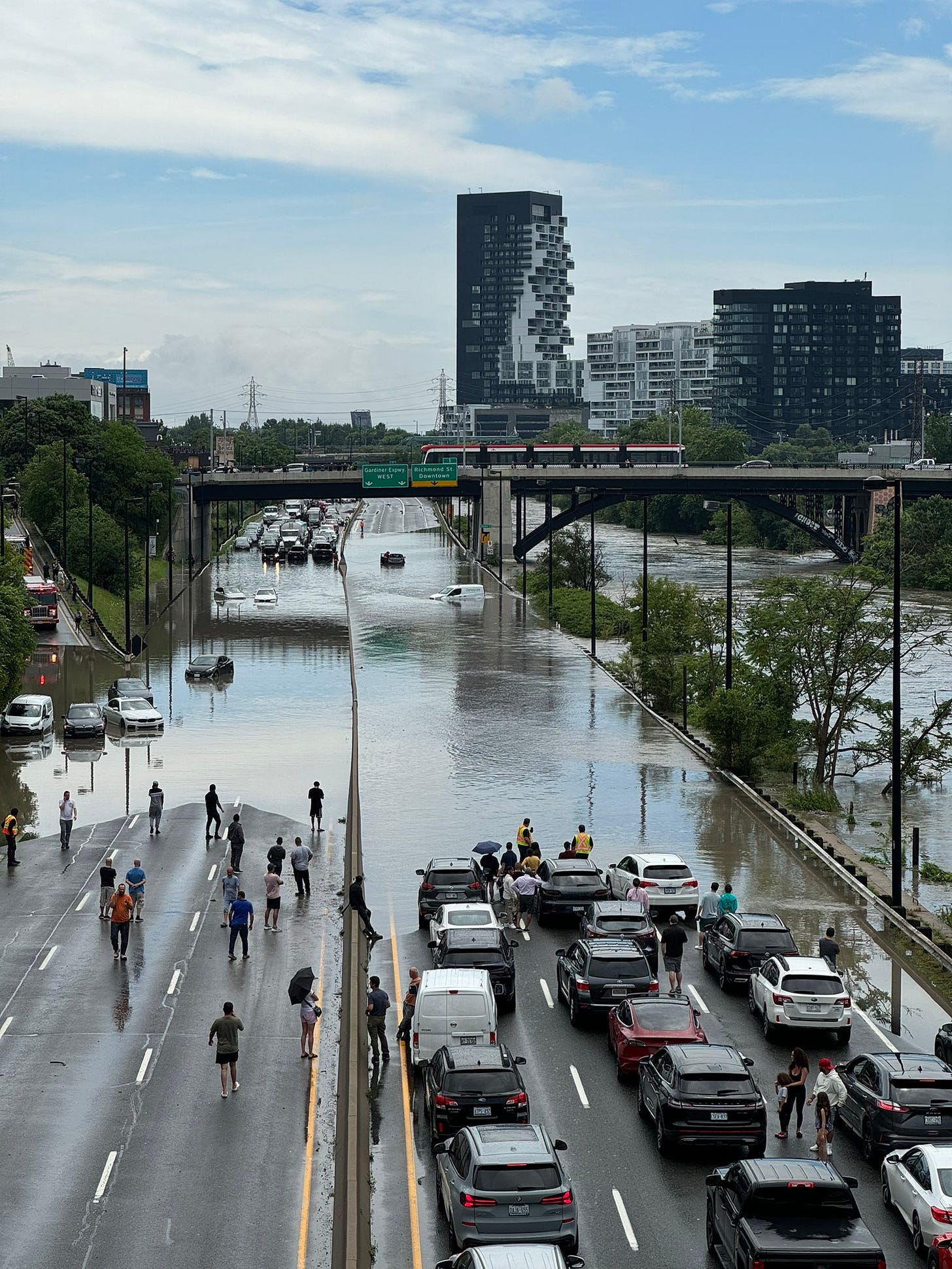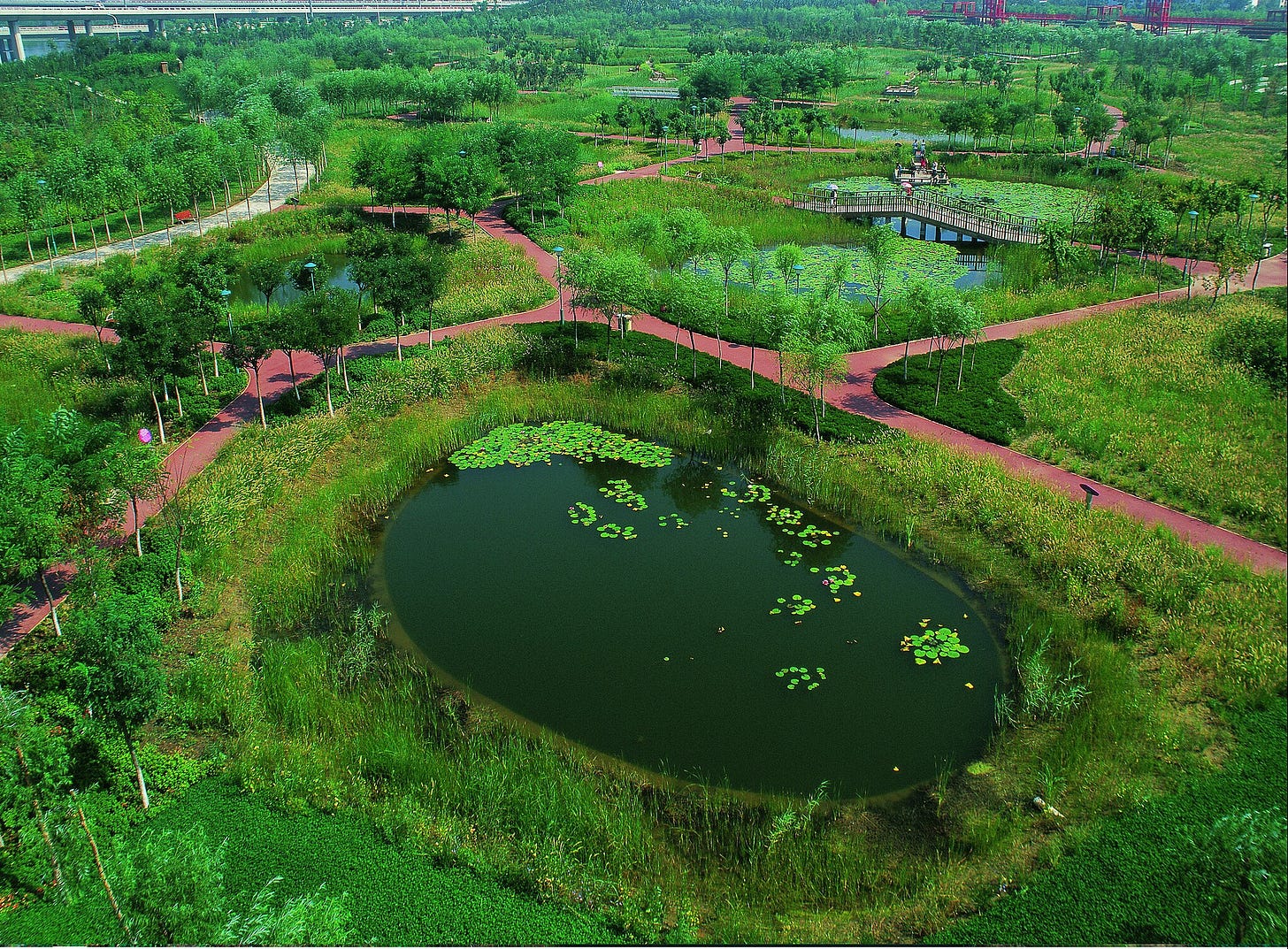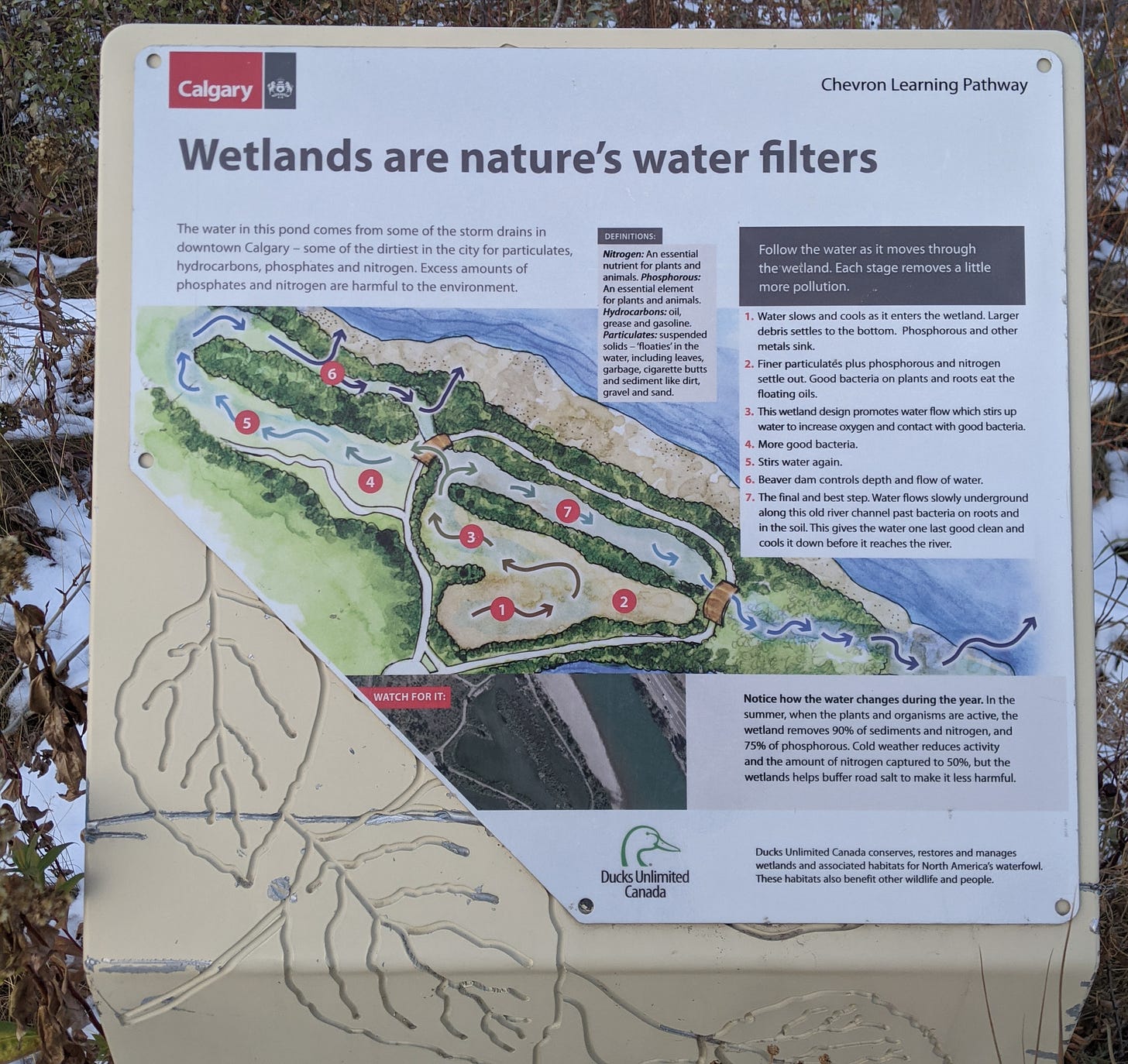Sponge Cities: Nature-Based Water Resilience
Integrating green infrastructure to better manage excess rainfall and mitigate both flooding and drought.
Cities worldwide are grappling with the escalating impact of the climate crisis. From devastating floods to prolonged droughts, the challenge of managing increasingly unpredictable amounts of water is becoming more urgent. Toronto's ordeal last month, with its first major flood since 2013, resulted in billions of dollars in damage and serves as a stark reminder of this reality.
July 2024 was also officially recorded as Toronto’s rainiest month ever, which highlights the pressing need for more innovative solutions.

China's Pioneering Water Resilience
Faced with similar challenges, China’s unprecedented urbanization over the past few decades, which recently used as much concrete in two years as the US did in the entire 20th century, reached a breaking point in 2012 - a catastrophic rainstorm in Beijing killed 79 people and caused extensive damage, exposing the limitations of concrete-heavy urban development and inadequate drainage systems being built across the country.
The Chinese government responded to this crisis by adopting sponge city planning at a national level. This innovative approach prioritizes nature-based solutions such as permeable pavements, rain gardens, green roofs, bioswales, constructed wetlands, and urban forests.
By mimicking natural hydrological processes, these elements absorb, retain, filter, and slowly release rainwater, offering a more sustainable and resilient alternative to conventional “grey” infrastructure (networks of pipes, concrete channels, and pumps) that are proving insufficient to handle increased amounts of storm runoff.

While grey infrastructure has been vital for economic growth and urbanization, its reliance on fossil fuel-intensive construction and operation has exacerbated climate-related risks. Sponge cities offer a nature-based alternative that seeks to restore ecological balance and address these challenges more sustainably.
Kongjian Yu, the Chinese landscape architect who pioneered the sponge city concept, has been championing this transformative approach since the late 1990s. In a CBC interview, he described it as "a fundamental change... an evolutionary change of the relationship between man and nature.” China aims to have 80% of its urban areas absorb and utilize 70% of annual rainfall by 2030.
Sponge Cities & Integrated Water Management

Incorporating a ‘sponginess’ component into urban water management is necessary to mitigate the impacts of future floods and droughts, which are expected to intensify as the average global temperature continues to rise. This approach is being adopted as a proactive and practical measure for new urban developments around the globe, recognizing that retrofitting existing grey systems is often more challenging.
Every city is different, and tailoring local-specific solutions that engage local communities, utilize native plant species that promote biodiversity, and respond to the unique climate conditions of the region will further enhance the effectiveness of sponge city projects.
Equally important, they should be complemented with robust planning and disaster risk management strategies, coordinated across multiple levels of government, to minimize the loss of life, property damage, and disruptions to critical services.
Addressing Water Scarcity
The growing global freshwater crisis is urgently prompting a broader shift towards integrated urban water management (IUWM), a holistic approach that seeks to better align urban development across various sectors — land use, housing, energy, transportation, etc. — to ensure sustainable economic, social, and environmental outcomes, with equitable and safe drinking water being a significant challenge for developing urban areas with limited infrastructure.
Absorbent sponge city planning provides scalable, natural-based solutions for managing increasingly scarce freshwater resources, helping reimagine our urban landscapes as resilient, adaptive, and regenerative ecosystems.


